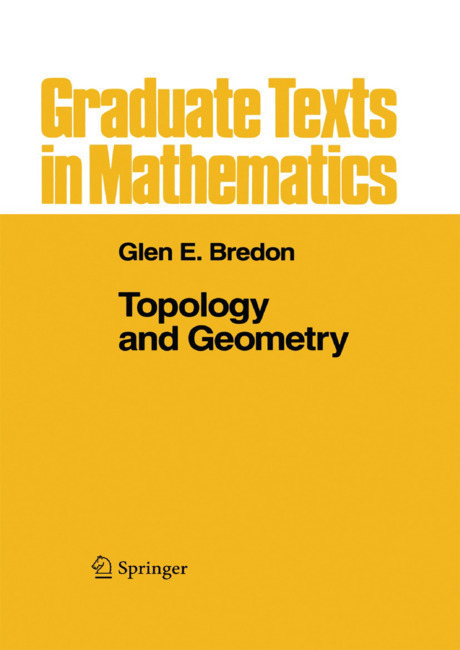Topology 1 (MATH 5350) at the graduate level is not a formal class at ETSU. Such a class existed previously, but it was converted to the undergraduate/graduate cross-listed class Introduction to Topology (MATH 4357/5357) in the late 1990s. The prerequisite for Topology 1 is the Introduction to Topology class, online notes for which are available at Introduction to Topology: General Topology and Introduction to Topology: Algebraic Topology (based on James Munkres' Topology, 2nd Edition).
The main body of Topology 1 consists of a brief exploration of Chapter I (General Topology), and thorough coverage of most of Chapter II (Differentiable Manifolds), Chapter III (Fundamental Group), and Chapter IV (Homology Theory). Topology 2 (MATH 5360) covers the other chapters.
Copies of the classnotes are on the internet in PDF format as given below. The "Proofs of Theorems" files were prepared in Beamer. The "Printout of Proofs" are printable PDF files of the Beamer slides without the pauses. These notes and supplements have not been classroom tested (and so may have some typographical errors).
Chapter I. General Topology. Chapter I introduction notes
- Section I.1. Metric Spaces.
- Section I.2. Topological Spaces. Section I.2 notes
- Section I.3. Subspaces.
- Section I.4. Connectivity and Components.
- Section I.5. Separation Axioms. Section I.5 notes
- Section I.6. Nets (Moore-Smith Convergence).
- Section I.7. Compactness.
- Section I.8. Products.
- Section I.9. Metric Spaces Again.
- Section I.10. Existence of Real Valued Functions.
- Section I.11. Locally Compact Spaces.
- Section I.12. Paracompact Spaces.
- Section I.13. Quotient Spaces.
- Section I.14. Homotopy.
- Section I.15. Topological Groups.
- Section I.16. Convex Bodies.
- Section I.17. The Baire Category Theorem.
- Study Guide I.
Chapter II. Differentiable Manifolds.
- Section II.1. The Implicit Function Theorem.
- Section II.2. Differentiable Manifolds.
- Section II.3. Local Coordinates.
- Section II.4. Induced Structures and Examples.
- Section II.5. Tangent Vectors and Differentials.
- Section II.6. Sard's Theorem and Regular Values.
- Section II.7. Local Properties of Immersions and Submersions.
- Section II.8. Vector Fields and Flows.
- Section II.9. Tangent Bundles.
- Section II.10. Embedding in Euclidean Space.
- Section II.11. Tubular Neighborhoods and Approximations.
- Section II.12. Classical Lie Groups.
- Section II.13. Fiber Bundles.
- Section II.14. Induced Bundles and Whitney Sums.
- Section II.15. Transversality.
- Section II.16. Thom-Pontryagin Theory.
- Study Guide II.
Chapter III. Fundamental Group.
- Section III.1. Homotopy Groups.
- Section III.2. The Fundamental Group.
- Section III.3. Covering Spaces.
- Section III.4. The Lifting Theorem.
- Section III.5. The Action of π1 on the Fiber.
- Section III.6. Deck Transformations.
- Section III.7. Properly Discontinuous Actions.
- Section III.8. Classification of Covering Spaces.
- Section III.9. The Seifert-Van Kampen Theorem.
- Section III.10. Remarks on SO(3).
- Study Guide III.
Chapter IV. Homology Theory.
- Section IV.1. Homology Groups.
- Section IV.2. The Zeroth Homology Group.
- Section IV.3. The First Homology Group.
- Section IV.4. Functorial Properties.
- Section IV.5. Homological Algebra.
- Section IV.6. Axioms for Homology.
- Section IV.7. Computation of Degrees.
- Section IV.8. CW-Complexes.
- Section IV.9. Conventions for CW-Complexes.
- Section IV.10. Cellular Homology.
- Section IV.11. Cellular Maps.
- Section IV.12. Products of CW-Complexes.
- Section IV.13. Euler's Formula.
- Section IV.14. Homology of Real Projective Space.
- Section IV.15. Singular Homology.
- Section IV.16. The Cross Product.
- Section IV.17. Subdivision.
- Section IV.18. The Mayer-Vietoris Sequence.
- Section IV.19. The Generalized Jordan Curve Theorem.
- Section IV.20. The Borsuk-Ulam Theorem.
- Section IV.21. Simplicial Complexes.
- Section IV.22. Simplicial Maps.
- Section IV.23. The Lefschetz-Hopf Fixed Point Theorem.
- Study Guide IV.
Return to
Bob Gardner's home page

